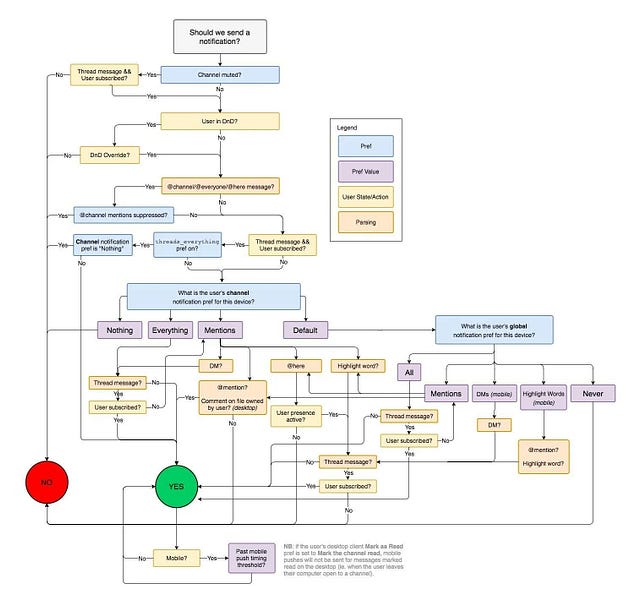
Slack notifications are an incredibly powerful tool for staying connected and up to date with both your team and the rest of your organization. A flowchart can be a helpful way to better understand how Slack notifications work, so you can make the most out of them.
When you receive an alert from Slack, there are specific steps that will occur in order for you to receive it. Your first step is to determine whether you have Slack direct notification settings enabled. If not, the message won’t be delivered to you. Once that’s determined, Slack checks your presence status (online, away or offline) and then checks whether or not you’ve turned on device notifications. If either of these settings aren’t enabled, you won’t see the alert.
If device notifications are enabled, Slack then checks if the type of message that was sent is part of a private channel or public channel (ie. DM/Mention/Alerts/Chat etc.) Different types of messages may trigger different kinds of notifications such as sound-based or blinking light based notifications but all depends on your preferences as well as any valid global/user-level settings set by an admin in Slack.
If everything is good, after checking for any valid global/user-level notification preferences set by user or an Admin in Slack, Slack sends the notification directly to your device through the web service from web push service within few seconds.
Once received on your device, depending on OS (iOS / Android), each OS may have its own set of system options as to how we relay this alert onto users’s phone including audio alerting, vibrating & flashing light alerts features depending on what type of need client is looking for from their notifiction flow systems Therefore it concludes that the whole process involved in receiving a notification from slack boils down essentially into a flowchart path explained earlier above
In sum, this flowchart explains how all messages sent via Slack can reach users quickly and easily via push notifications. By understanding these steps and making sure all settings are properly enabled, businesses can ensure timely communication and collaboration with/among their team members anytime!